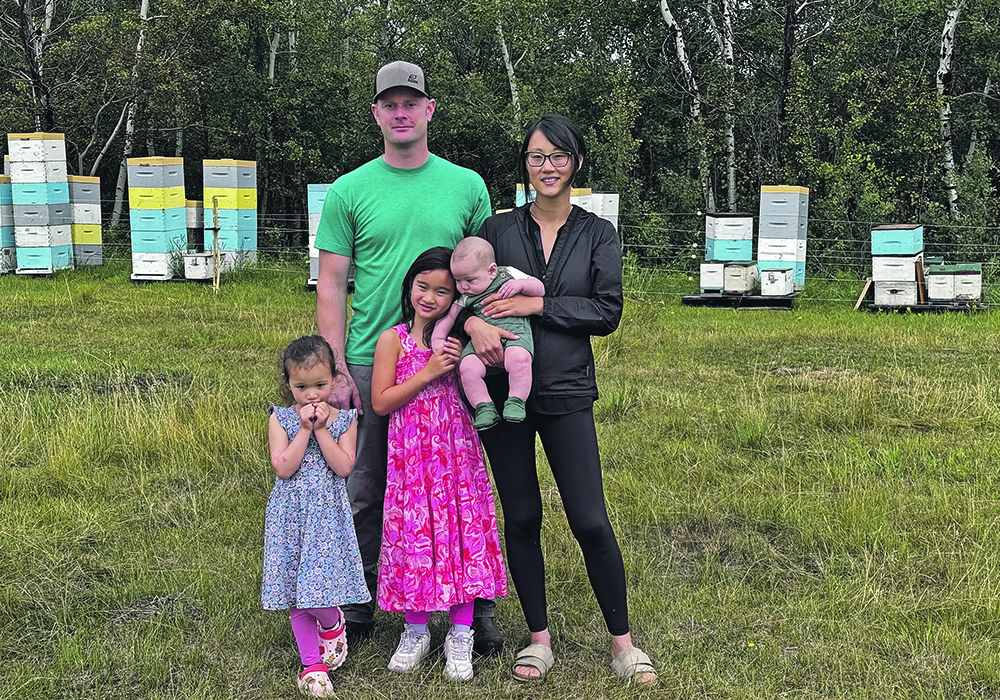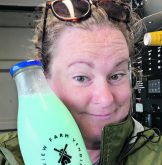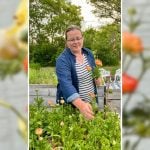Alberta beekeepers sell their honey and related products mainly at farmers markets instead of directly to a processor
How does a young woman from the bustling city of Beijing, China, with a population of 21.4 million become a beekeeper near the small village of Paradise Valley, Alta., with a population of 153?
Songshan Flint came to Canada to attend the University of Saskatchewan in 2004.
“My parents encouraged me to further my education in Canada,” she said.
Read Also

Alberta cracks down on trucking industry
Alberta transportation industry receives numerous sanctions and suspensions after crackdown investigation resulting from numerous bridge strikes and concerned calls and letters from concerned citizens
After obtaining her bachelor of science food chemistry, she pursued her master’s degree, and it was during this time that she met her soon-to-be husband, Jason, at a Bible conference.
“I joke with my friends — I spent 10 years at university to become a farm wife,” Songshan said.
It is a life the couple embraces, although they acknowledge the sacrifices made to start up and run their business, Flint Honey.
“I used to believe the only way to enjoy myself was to get away from the farm,” said Jason, who is the fifth generation Flint to farm this land.
“Now, a walk after supper, the kids’ activities, is all ways we find enjoyment. It is hard to get away from the farm, but no longer necessary to find happiness.”
He trades labour for equipment use with his parents, who operate a mixed cattle and grain farm and live on the same quarter as Jason and Songshan. Jason’s operation is straight grain.
When he initially started farming, he worked alongside his father shingling roofs and doing home renovations to supplement his farm income.
“After a few years, I wanted to find a way off the roof, and I thought maybe a few bee hives could help me do that.”
Before his marriage to Songshan, Jason purchased about 50 hives. He spent some time with a nearby beekeeper and researched the art of beekeeping.
“It was Jason’s love of honey that led him to the bees,” Songshan said.
“His honey habit started out as small on-farm hobby that turned into a business.”
She modestly downplays her education, but she brought her own skill set to the operation.
“I know how to do research, and that was important when I was learning the bee business. We made mistakes, but we learned from them.”
The Flints now have 150 hives.
“It is a small number of hives in comparison to commercial operations, but it is a size we can handle,” Songshan said.
“Finding farm help is difficult. We are the workers, the accountant, the HR people and the marketers.”
This summer they are fortunate to have a relative of Jason’s helping out until her return to university.
The Flints also appreciate the help of family and friends. They know it is a joint effort between everyone to run the business.
All of the honey and wax produced on the farm are used in the products they sell. They have developed a line of creamed honey, flavoured honey, hand cream, lip balms, candles and other wax products.
They do not sell raw honey to processors. On average, their bees produce 130 to136 kilograms per colony.
Alberta, Saskatchewan and Manitoba beekeepers have significantly higher production averages than other regions, coming in at 35 to 130 kg per colony. Weather plays a large part in production because bees prefer sunny warm temperatures between 23 and 29 C.
Farmers markets have become an important marketing tool.
“I used to call the markets Songshan’s baby because she liked them so much,” Jason said.
“Now we have three children, and the market is no longer her baby. They get harder and harder to go to with the three kids.”
The youngest Flint child is three months old and the oldest is six.
They both admit selling raw honey to a co-operative or processor would be easier and eliminate the work of the farmers markets. Not only are they developing, packaging and marketing their own product, but they have to haul the products to the market, unload, set up and then reload unsold products.
Despite the work, the Flints attend two markets in Lloydminster and one in Vermilion each week.
Songshan has fond memories of starting at the markets.
“I met so many people, and they all helped me. I learned so much from everyone I talked with.”
Word of mouth has helped to grow the business, and the markets are a way to showcase their products. They also have a website and sell to patrons across Canada. A couple of the most popular items on the website are the lip balm and the body lotion.
The Flints have developed flavoured honey and many wax products.
“I’m no stranger to the lab and microscope. That helps me with new products,” Songshan said.
“All our products are made with intention and not just because someone mentions they might like a new flavour.”
They also sell honey products in retail stores in nearby Wainwright, Alta., Lloydminster and Vermilion, Alta.
The hives are kept in nearby pastures, with some bees feeding on wildflowers and dandelions. Other colonies are kept closer to alfalfa and clover fields.
Bees that derive nectar from canola fields produce sought-after light-colored honey, but the Flints prefer to keep their bees away from that crop.
“Canola nectar produces a honey that tastes more acidity. A small amount of canola nectar is all right, mixed with alfalfa and clover, but not all canola nectar,” she said.
“Different ethnic groups prefer honey that is darker with more flavour. Wildflower honey has a stronger taste.”
Jason is also concerned about the damage that the pesticides used on canola may do to the bees.















